Ricky Carmichael’s Championship Honda CR250 is undoubtedly one of the most iconic race bikes of the past 15 years. Ricky was able to capture a perfect season, battle against new contenders, and fight adversity within to become better know as the GOAT (greatest of all time). Dirt Bike Magazine sat down with Erik Kehoe (race team manager) at the Honda Headquarters in Southern California to reminisce on Ricky’s era of dominance while at Honda.
One of the first things Erik made comment on was when Ricky first joined the team. He preferred the rear of the bike to be “dead” and extremely low. He wanted a lot of rebound damping and all costs didn’t want the back end of the bike hitting him in the butt through the whoops. Erik also explained to the Dirt Bike staff that the bike didn’t turn as well as it could have for that very reason.
During that time on Honda, Ricky and the team worked over time to figure out a way to get the bike to steer better. Ricky would slide the rear into corners and formed that habit through his bike set up that he ran.
A huge learning year for Ricky and the team was 2002. Erik took us back to the Anaheim opener when RC crashed out of the race. Ricky would later on regroup to win a Supercross title for the team.
The team worked with Renthal on the size of the sprockets in conjunction with the handling. Cliff White was instrumental in getting parts set up for their bikes and working with the Japanese.
The 4 strokes were coming but not quite yet. This was the last hoorah for the 2 stroke era at Honda. Kevin Windham was already on the 4 stroke and showing that it could win races.
Similar to the factory bikes we see today, the race teams ran various materials on their bike. You can see that the brake hangar here and caliper are all factory pieces. Erik told us that in that particular time frame it was all about weight savings. Kehoe explained that it was a balance between strength and weight. Honda was right at that limit.
Over sized fork lugs and anodized rims aren’t a new thing. Ricky was running similar designs in 2002 on his Honda CR250. Kehoe said things definitely evolve as 4 strokes came long.
A stand out season for Kehoe and Ricky was 2002 when RC was able to capture the first ever perfect season going 24-0. Erik told us that it was incredible to see something like that happen. Ricky was able to avoid first turn pile ups, illness, bike issues, etc. Kehoe admired the fact that Ricky started the season rough and was able to come back and show absolute dominance by the end of the year.
“It was an interesting time because Ricky had grown up racing only 2 strokes.” Kehoe explained. During the 2003 season Kevin Windham made his comeback. K-Dub was challenging RC for wins and the writing was on the wall that there were certain things that the 4 stroke had a clear advantage on. Ricky could see that and recognized that a change was coming. He was able to race the 450 in 2003 just enough to get his feet wet before making the switch to full time 4 stroke in the outdoors for 2004.
In 2003 new up and coming stars like Chad Reed were able to give Ricky a challenge. Ricky knew that he would have to improve on all his strengths. Bike set up for him would have to change to be able to push harder against competitors like Reed. Chad’s corner speed was something the team studied. The way he was able to use the front end of the bike better where Ricky used more of the rear. RC went back to school with his mom in Florida and put more work in to defend a title. Erik explained that as Ricky worked to improve his own personal skills, the team worked hard to help get the bike to turn better in the front end department.
Fonseca and Ricky were teammates at the time. Two completely different riding styles. Ernesto was a smooth and calculated rider while Ricky was more on the aggressive side. Erik told us that they both would learn from each other at the test track. They would take parts of their style and implement it into their own. Above in the photo is just some of the factory linkage and shock RC was using at the time.
Factory HRC components are littered all over RC’s bike. This one off shift lever stood out to us. Not because we haven’t seen something like this before but it wasn’t polished and almost under the radar. Most of of the factory bikes to date are very polished and shiny. It was cool to see this almost raw material look that canvased the entire motorcycle. You can even see on the ignition cover that it got its fair share of use.
Off the rear brake pedal the spring had been moved to a different location than stock. A lot of designs like this are done 17 years later to avoid the rear master cylinder guts being pulled out during racing. The production rule was in effect even then and Kehoe said that the rules have only changed slightly to what they can and can’t do.
HRC foot peg mounts and foot pegs. You’ll find something similar on Ken Roczen’s HRC CRF450R today. The pegs are made from a solid block of titanium and ultra expensive to make.
Something we thought was gratifying to here was about RC4’s work ethic. Erik told us regardless of where Ricky was (Florida, test track,etc) he was always giving 100%. He would come in from a near death crash to talk to the team and Erik would ask him about it. Ricky had no idea what he was even talking about. Ricky just rode on that edge all the time and didn’t think twice about it. From the sidelines it looked like he was next to disaster but Ricky was just that comfortable hanging it out there.
Pete Fox from Fox Racing was kind enough to share some photos from the era. Before the time of social media it was easier to keep from things leaking to the general public. James Stewart in the off season was testing with Honda and almost became Ricky’s teammate. Just sit and think about that for a second. Honda almost had Ricky at the height of his career and James Stewart as his teammate on a 125.
Ricky saw that the 4 stroke movement was coming. In the off season Ricky had injured his knee in 2003. He decided to take the following Supercross season off (Chad Reed won 2004 Supercross title). When Ricky returned at the outdoor season he was on a CRF450R. Not only did he make the switch to the 4 stroke but achieved his 2nd perfect season going 24-0.
During the transition year on to the 4 stroke in 2004 Ricky’s set up also went to a more “normal” stance. The bars weren’t rolled back as much and the rear being higher so it could corner better.
A factory mounted carbon silencer on the rear of Ricky’s bike. Clean with no logos. Check out the holes in the silencer mount to save weight.
HRC clamps with a specific offset to Ricky’s liking and low Renthal handlebars.
The rear brake assembly on Ricky Carmichael’s Honda CR250. The pistons are usually DLC coated and even have holes drilled into them to keep cooler on factory bikes today.
We were surprised not to see a brake stop like some of the factory bikes have now. The swing arm pivot did have caps on both ends to keep from mud packing. Material changes on the swing arm pivot are something all the factory teams play with. Titanium and aluminum are usually the go to options.
You would never see a holeshot device this high in the forks now. Ricky didn’t experience the metal grate starts that Supercross is using now. The metal grate provides a lot more traction and the rider can run the forks extremely deep in the stroke with the holeshot device engaged.
Erik told us that every year a new rider comes to the team with their own style and elevates the game. He told how how amazed he was with the speed the current 450 roster is able to go. RC, Rick Johnson, McGrath, Hansen, and many more paved the way and pushed the boundaries of what these bikes could do. Ken Roczen is doing the very same 17 years later on Honda with Erik Kehoe in his corner as Race Team Manager.



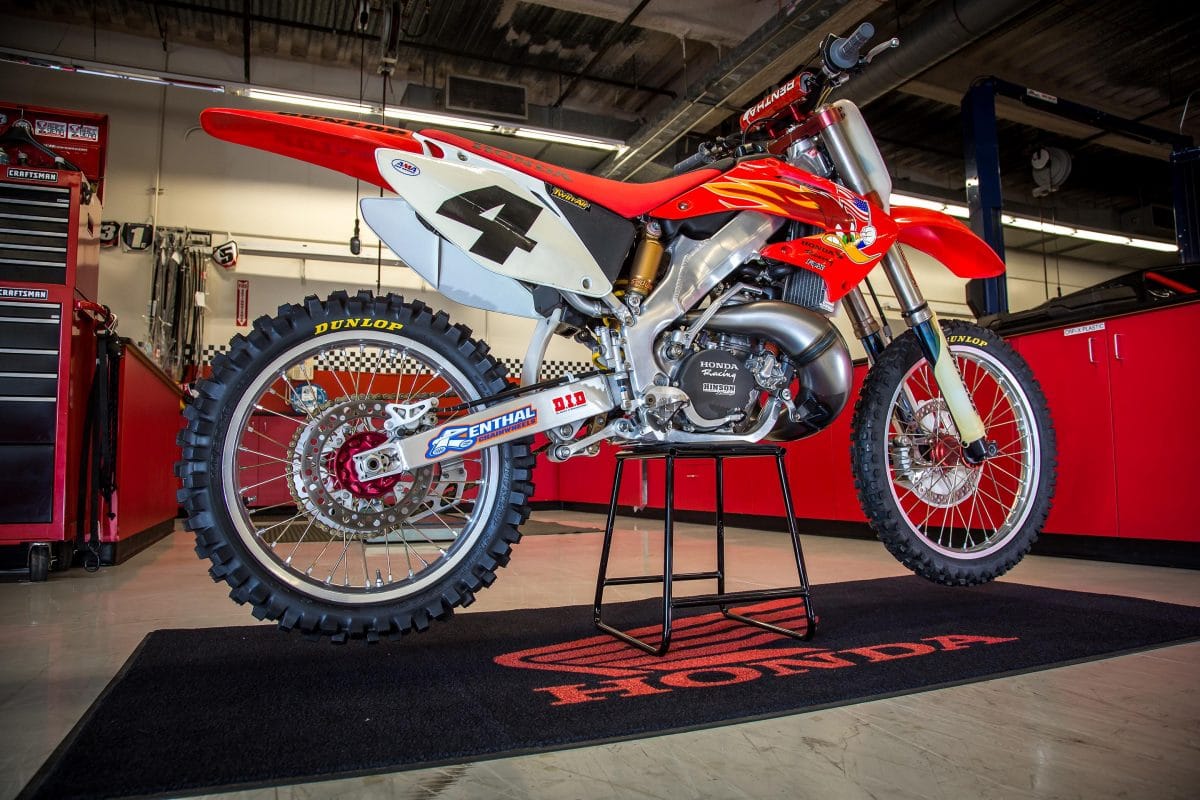

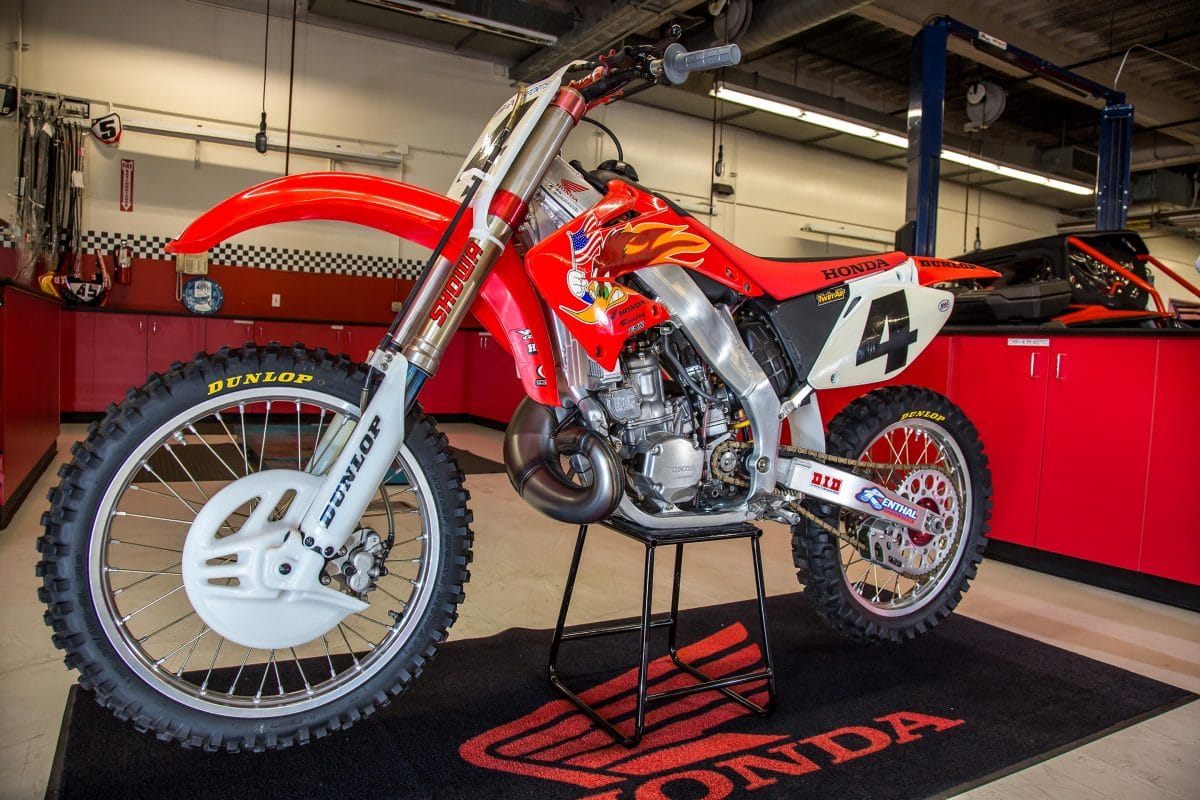
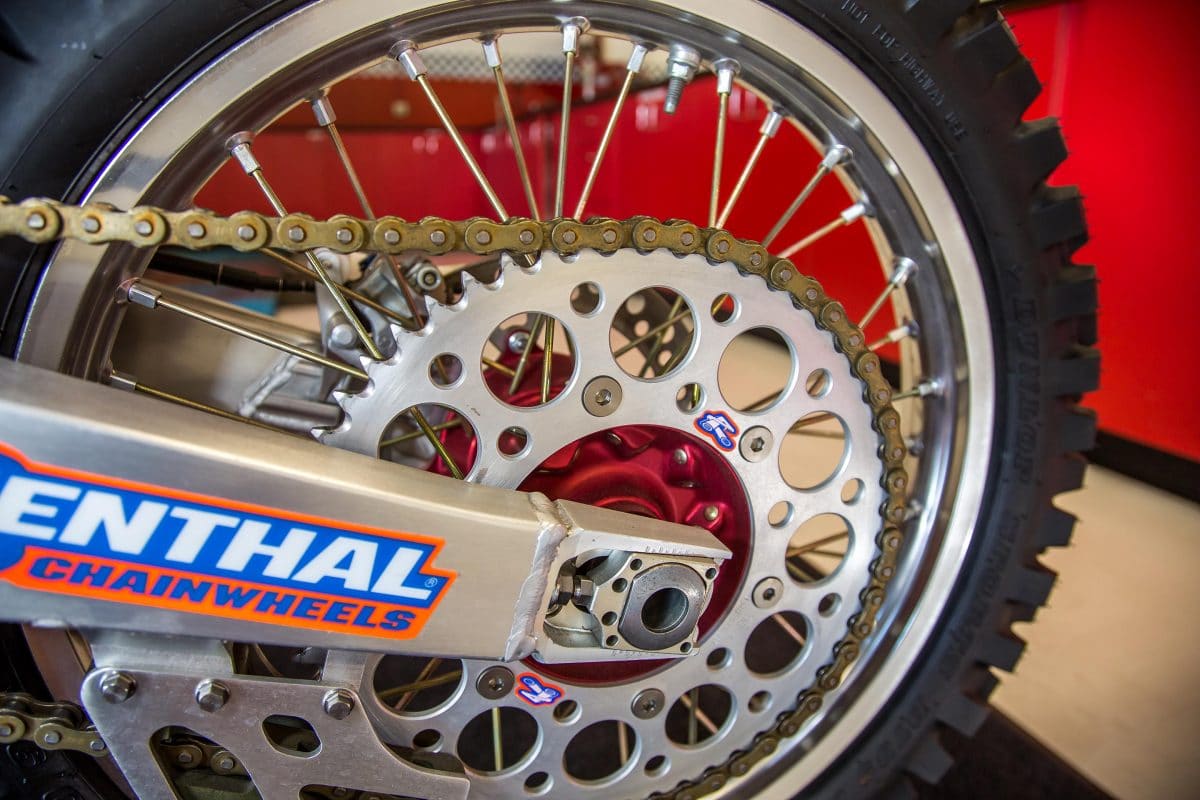



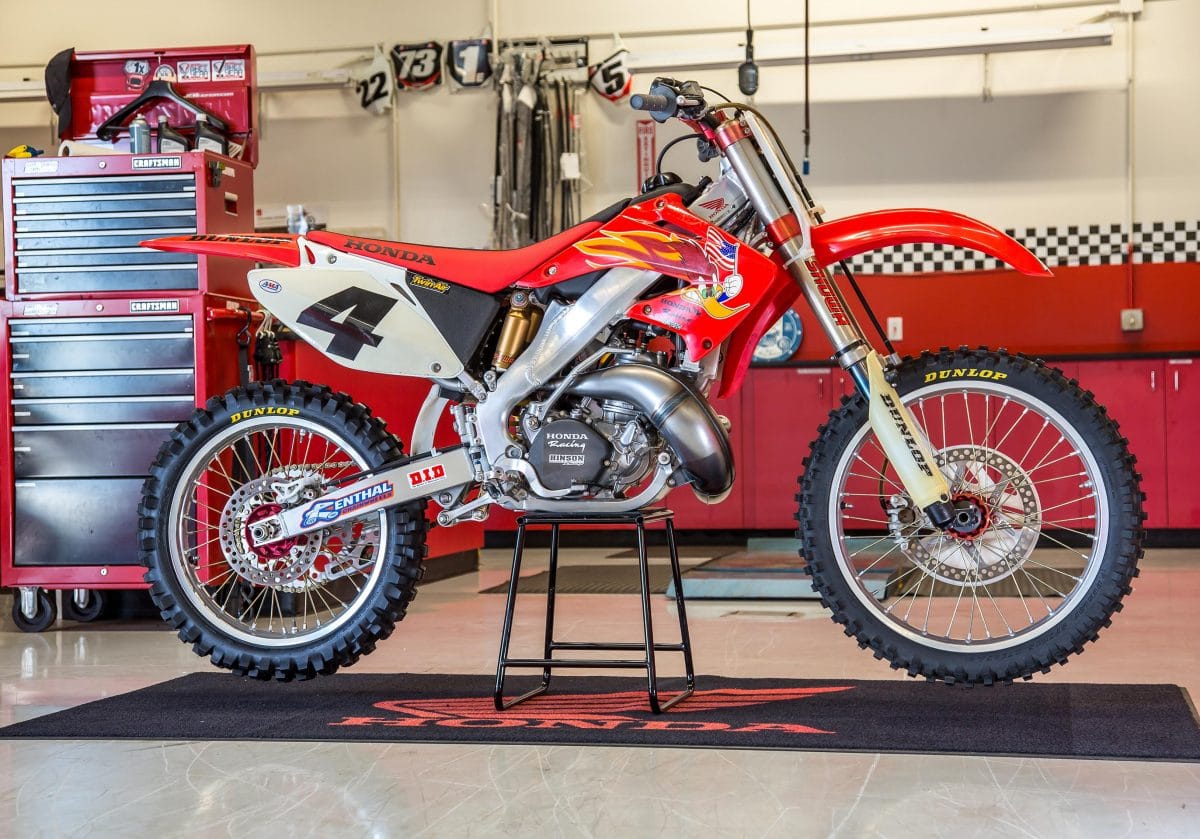







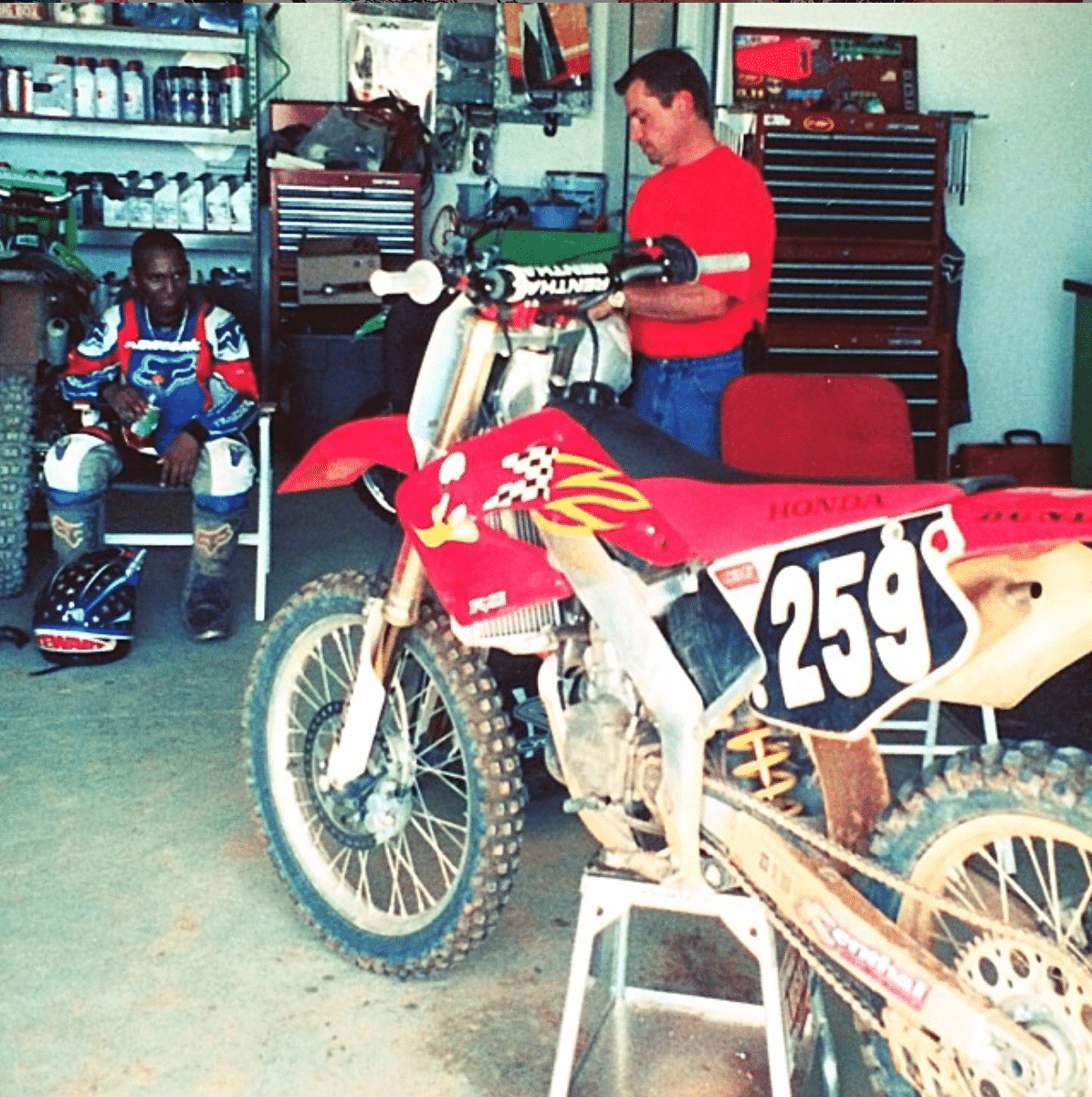



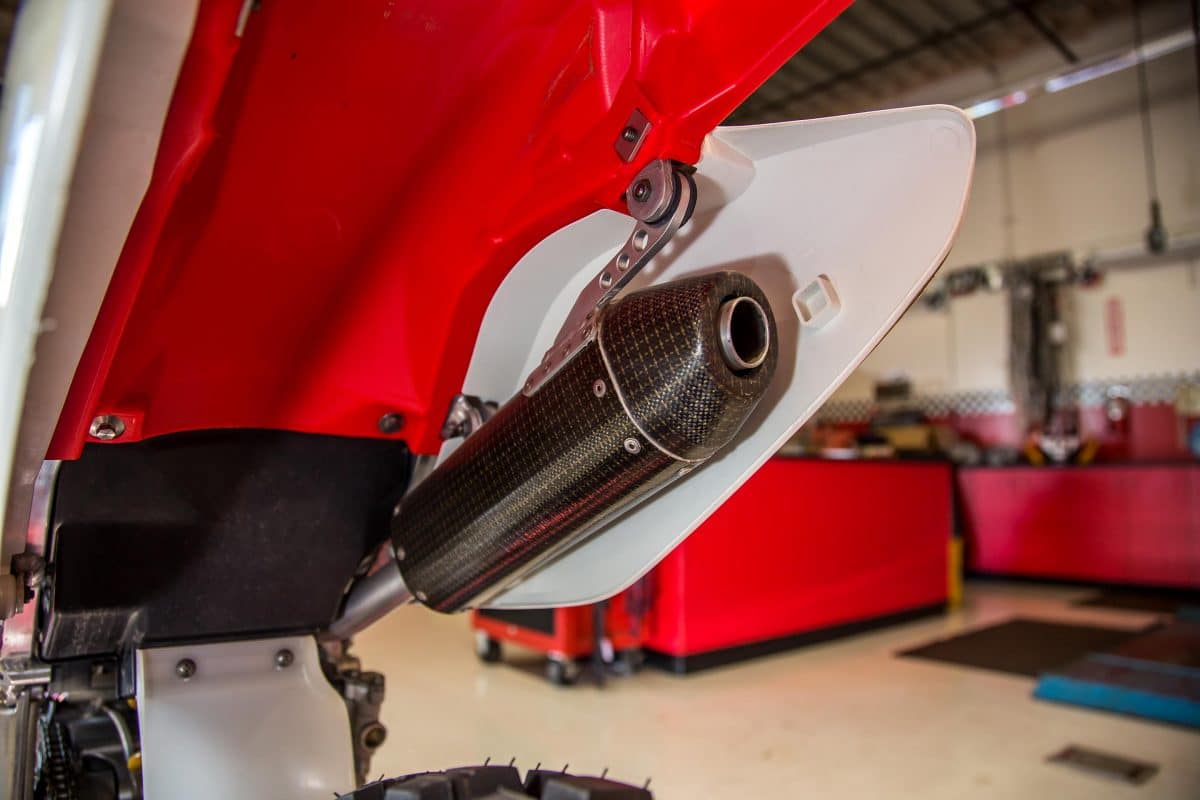










Comments are closed.